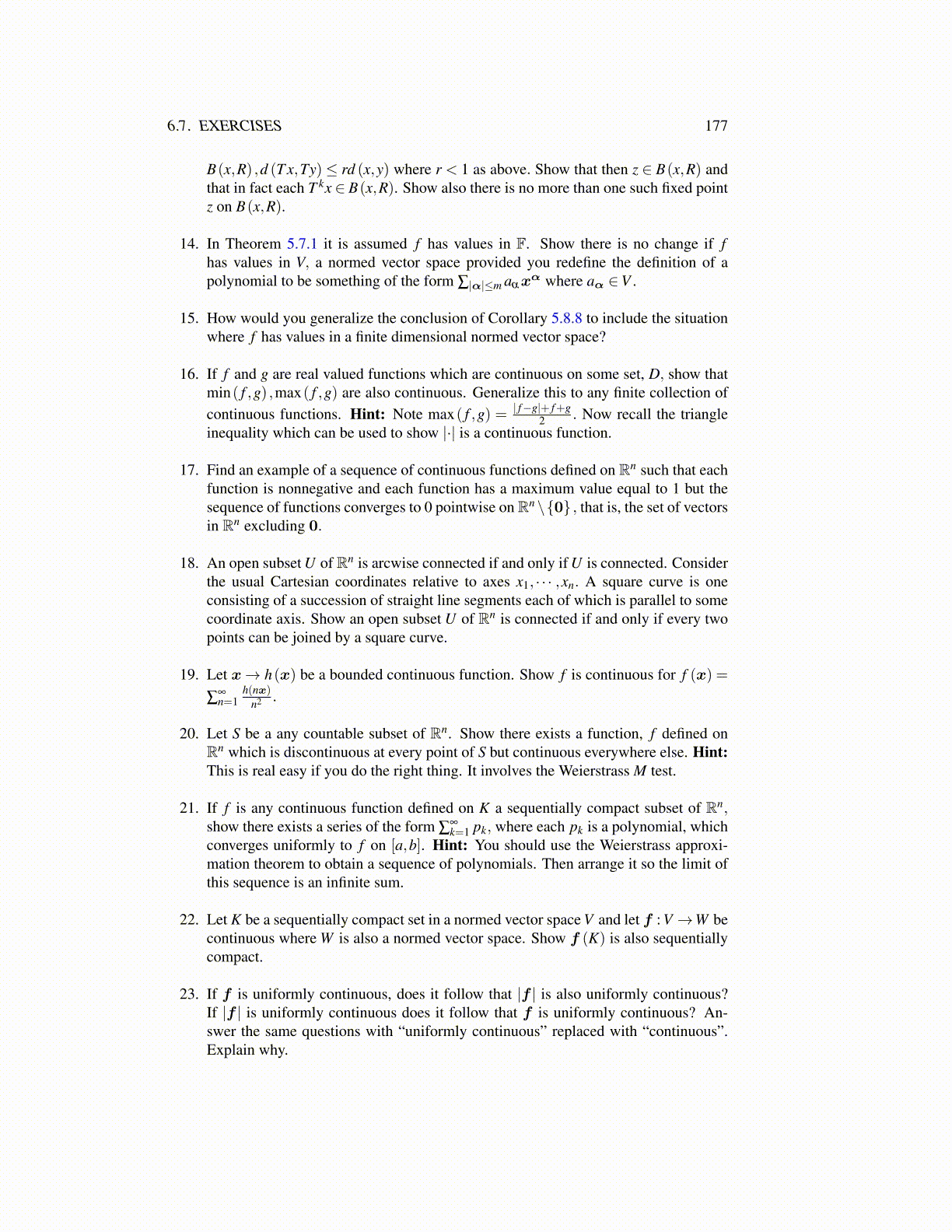
6.7. EXERCISES 177
B(x,R) ,d (T x,Ty)≤ rd (x,y) where r < 1 as above. Show that then z ∈ B(x,R) andthat in fact each T kx ∈ B(x,R). Show also there is no more than one such fixed pointz on B(x,R).
14. In Theorem 5.7.1 it is assumed f has values in F. Show there is no change if fhas values in V, a normed vector space provided you redefine the definition of apolynomial to be something of the form ∑|α|≤m aαx
α where aα ∈V .
15. How would you generalize the conclusion of Corollary 5.8.8 to include the situationwhere f has values in a finite dimensional normed vector space?
16. If f and g are real valued functions which are continuous on some set, D, show thatmin( f ,g) ,max( f ,g) are also continuous. Generalize this to any finite collection ofcontinuous functions. Hint: Note max( f ,g) = | f−g|+ f+g
2 . Now recall the triangleinequality which can be used to show |·| is a continuous function.
17. Find an example of a sequence of continuous functions defined on Rn such that eachfunction is nonnegative and each function has a maximum value equal to 1 but thesequence of functions converges to 0 pointwise onRn \{0} , that is, the set of vectorsin Rn excluding 0.
18. An open subset U of Rn is arcwise connected if and only if U is connected. Considerthe usual Cartesian coordinates relative to axes x1, · · · ,xn. A square curve is oneconsisting of a succession of straight line segments each of which is parallel to somecoordinate axis. Show an open subset U of Rn is connected if and only if every twopoints can be joined by a square curve.
19. Let x→ h(x) be a bounded continuous function. Show f is continuous for f (x) =∑
∞n=1
h(nx)n2 .
20. Let S be a any countable subset of Rn. Show there exists a function, f defined onRn which is discontinuous at every point of S but continuous everywhere else. Hint:This is real easy if you do the right thing. It involves the Weierstrass M test.
21. If f is any continuous function defined on K a sequentially compact subset of Rn,show there exists a series of the form ∑
∞k=1 pk, where each pk is a polynomial, which
converges uniformly to f on [a,b]. Hint: You should use the Weierstrass approxi-mation theorem to obtain a sequence of polynomials. Then arrange it so the limit ofthis sequence is an infinite sum.
22. Let K be a sequentially compact set in a normed vector space V and let f : V →W becontinuous where W is also a normed vector space. Show f (K) is also sequentiallycompact.
23. If f is uniformly continuous, does it follow that |f | is also uniformly continuous?If |f | is uniformly continuous does it follow that f is uniformly continuous? An-swer the same questions with “uniformly continuous” replaced with “continuous”.Explain why.